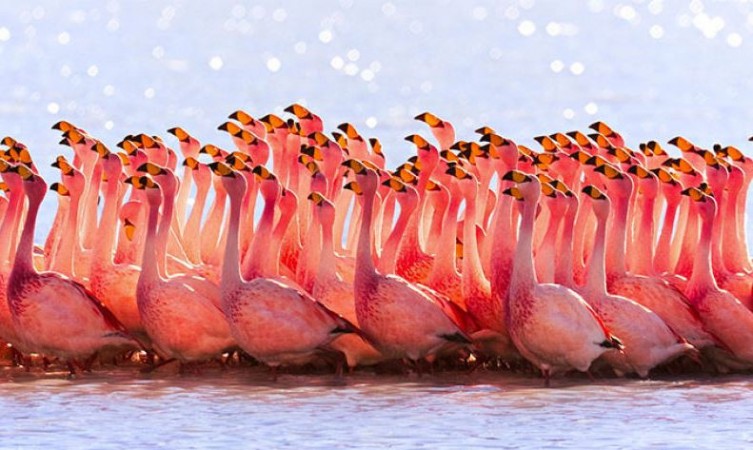
Flamingos are undoubtedly one of the most fascinating and captivating creatures in the animal kingdom. Their vibrant colors, peculiar beaks, and elegant stance make them a sight to behold. Besides their individual allure, one intriguing aspect of flamingos is their group behavior. When gathered together, a flock of these magnificent birds is known as a "flamboyance." In this article, we will delve into the world of flamingos, exploring their unique characteristics, group behavior, the significance of the term "flamboyance," conservation efforts, and interesting fun facts.
What are Flamingos?
Description and Habitat
Flamingos belong to the family Phoenicopteridae and are famous for their long, thin legs, gracefully curving necks, and brilliantly pink plumage. They primarily inhabit saline or alkaline lakes, lagoons, and estuaries, seeking environments rich in brine shrimp and blue-green algae, which provide the carotenoid pigments that give their feathers their stunning pink color.
Physical Characteristics
These avian wonders have a distinctively shaped beak designed for filtering food from the water. Their bent beaks, equipped with comb-like structures, allow them to trap tiny organisms while feeding. Flamingos also possess webbed feet, enabling them to wade through shallow waters with ease. Their unique adaptations make them proficient in both water and land-based activities.
Feeding Habits
Flamingos are filter-feeders, and their diet primarily consists of algae, crustaceans, mollusks, and small aquatic insects. As they feed, their beaks filter out food from the mud and water, making a distinctively rhythmic noise that adds to their charm.
Group Behavior of Flamingos
Social Structure
Flamingos are highly social birds and often form large colonies. Their social structure is well-defined, and they exhibit strong bonds within their groups. These bonds are strengthened through various activities, including synchronized movements and vocalizations.
Formation of Flamboyance
When a large gathering of flamingos comes together, it is referred to as a "flamboyance." The formation of such groups serves multiple purposes, including protection from predators, shared foraging opportunities, and communal nesting sites. The sight of a flamboyance is truly awe-inspiring, as hundreds or even thousands of flamingos unite in harmony.
The Significance of the Term "Flamboyance"
Historical Context
The term "flamboyance" not only describes a group of flamingos but also holds historical significance. Its origin can be traced back to the late 19th century, derived from the French word "flamboyer," which means "to flame." This word aptly captures the striking and fiery appearance of these birds, evoking a sense of grandeur and spectacle.
Symbolism and Cultural References
Throughout history, flamingos have captured the imagination of various cultures, symbolizing different attributes such as grace, beauty, and elegance. Their pink hue has been associated with love, romance, and passion. In some cultures, they are considered symbols of happiness and good fortune.
Flamingo Conservation Efforts
Threats to Flamingos
Despite their widespread recognition and cultural significance, flamingos face numerous threats to their survival. Habitat destruction, pollution, and disturbance of nesting sites are some of the primary challenges they encounter. Climate change and fluctuations in water levels also impact their breeding patterns and food availability.
Conservation Measures
To protect these magnificent birds and their habitats, various conservation organizations and wildlife agencies have undertaken essential efforts. These include creating protected areas, conducting research to understand their behavior and migration patterns, and promoting responsible tourism to minimize human interference.
Fun Facts about Flamingos
Flamingos, with their elegance and captivating allure, never fail to capture the hearts of those who encounter them. Their group behavior, represented by the term "flamboyance," adds an extra layer of fascination to these magnificent birds. As we appreciate the beauty of flamingos, it is essential to remember the conservation efforts required to protect their habitats and ensure their survival for generations to come.
Govt Action Looms for Twitter after Viral Video of Manipur Women Paraded Naked
Manipur Unrest: CM Urges Thorough Probe into Viral Video's Authenticity
Sonia Gandhi Urges PM Modi for Manipur Discussion in Parliament